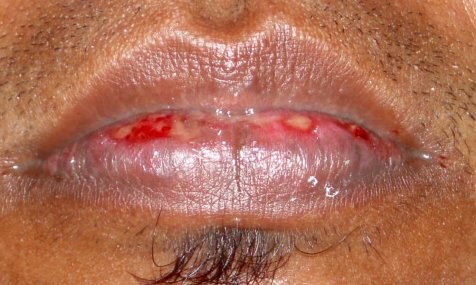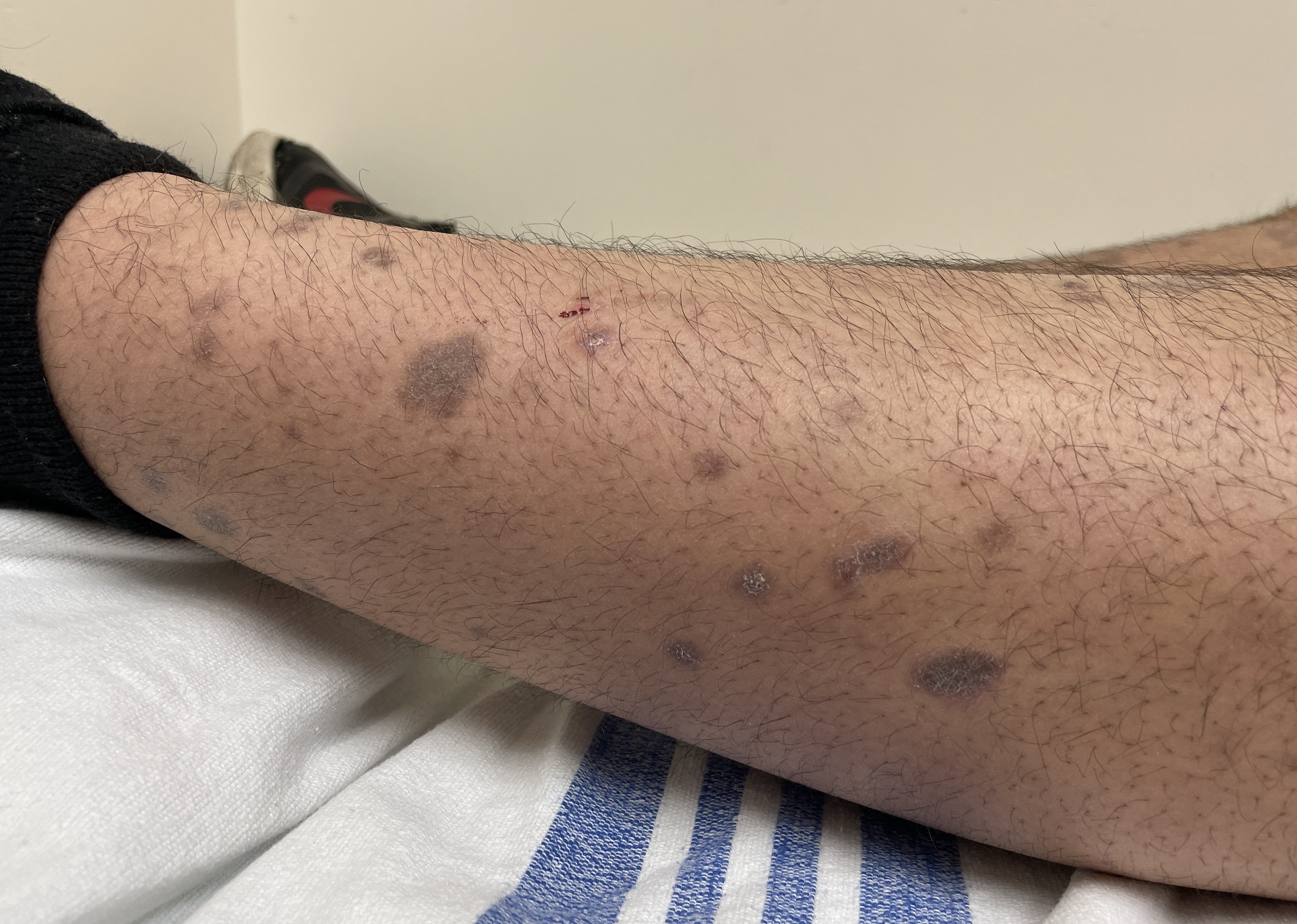Chapter 4: Papulosquamous Disorders
Lichen Planus
What is it?
Inflammatory skin disorder that can be chronic. It is known for the 5 P’s (pruritus, papules, purple, planar and polygonal). It can involve all ages but is more common in adults. Involvement includes the skin, hair, nails and mucous membranes. The trigger is usually unknown but vaccines, medications, infections HCV and allergens have been linked.
The 5 P’s of Lichen Planus
- Pruritus
- Papules
- Purple
- Planar
- Polygonal
What does it look like?
The lesions present as small to medium sized, shiny, flat-topped purple papules that can coalesce to form plaques. Secondary scale can develop and the characteristic thin white lines in the lesions are called Wickham striae. The most common sites of involvement include the ankles, wrists, lower back and genital skin. They are often pruritic and Koebner phenomenon can be seen. Mucous membranes can be involved, and the most common presentation is a lacy reticulated white line on the inner aspect of the cheeks.
How is it treated?
For mild involvement, topical corticosteroids (mid potency) are used. Calcineurin inhibitors are another option. For more widespread disease, phototherapy is usually very effective. Prednisone can be used for short periods. Other systemic agents, including acitretin, methotrexate, cyclosporine, griseofulvin and metronidazole have been trialed in small studies.
Hover over image for caption.



